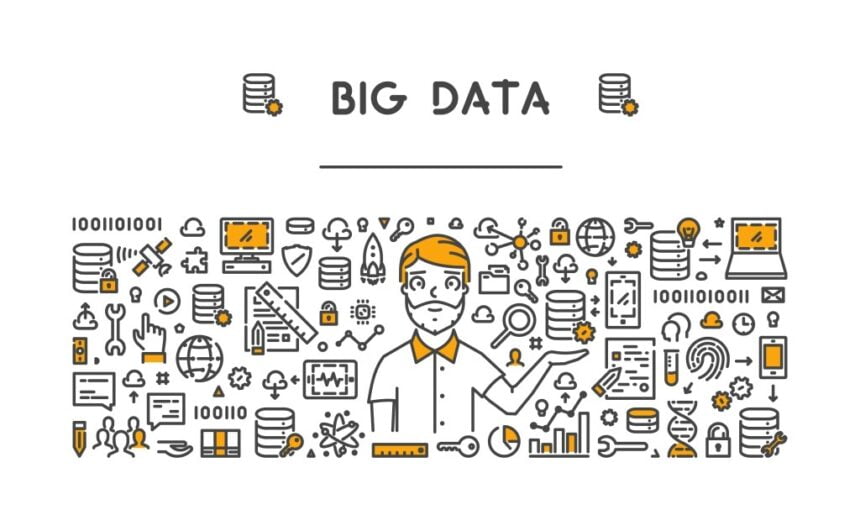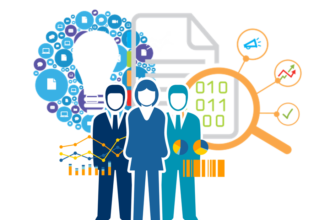When people think of big data, they often think of machines, robots and things that might be generally impersonal. But when you couple data with an altruistic mission, the results can be astounding.
When people think of big data, they often think of machines, robots and things that might be generally impersonal. But when you couple data with an altruistic mission, the results can be astounding.
As we sink deeper into the digital era, nonprofits are now presented with new opportunities. For example, 56% of people donated to an organization because they read a story via social media. Fundraising sites such as DonorsChoose.org, Causes.com and Network for Good allow organizations to raise money with a simple click of a button.
But this is only the beginning. Here we’ll take a look at which organizations have upped the ante by becoming not only socially-driven, but data-driven as well. See how these 6 nonprofits are using data to empower others and make a genuine difference in the world.
1.) JANE GOODALL INSTITUTE
In the last 100 years, we have gone from having approximately 1-2 million chimpanzees in the wild to an estimated 300,000. By using Open Data Kits and empowering the local community to use smartphones, tablets and the cloud to monitor changes in the Gombe National Forest (and other parts of Africa), the Jane Goodall Institute believes they can save 85% of the chimpanzee population that would have otherwise been lost to deforestation and over-farming. For example, if a tree gets cut down, a Forest Monitor can use his or her phone or tablet to take a picture of the chopped tree and submit coordinates to the cloud. This information is then collected into a database which gives the Institute a clear understanding of where there might be a threat to the chimpanzees. The organization can determine where the chimpanzees can safely relocate or work with the local government to take proper measures to help prevent displacement. And to think that Jane Goodall’s data collection started off with one person (her) monitoring chimpanzee behavior on pen and paper (in the 60s) and has now evolved into a highly sophisticated data collection system that will likely protect the remaining chimpanzee population.
2.) UNICEF
As UNICEF’s strictly data-dedicated website so perfectly states, “problems that go unmeasured often go unsolved.” With an estimated 2.2 billion children around the world, UNICEF uses an international survey program called the Multiple Indicator Cluster Surveys (MICS) to deploy and analyze household data surveying women and children around the world. They too empower the local community to use techonology to report information back to a centralized database.
Data.unicef.org then displays the results of these surveys, which are publicly available. Visitors can choose a specific country or a topic (malnutrition, infant mortality, etc) to extract insight from their surveys. For example, if I wanted to get a better understanding of infant mortality rates in Haiti, the data from the MICS has been translated into a clean interface that gives me a clear picture of the trends around infant mortality rate over the last several decades. In a single glance, I can see the current situation is improving, except for a massive spike in 2010. I can also see that Haiti falls into one of the worst countries for attended births and secondary education. With this type of data, UNICEF offers detailed insights and clear visualizations that displays how one country might compare to the next ,and how dire a situation might be in a particular area, which ultimately helps both the organization and donors decide more accurately where to allocate their money.

3.) KHAN ACADEMY
The National Center for Education Statistics released a report last year that showed that one out of every four college students took an online course. While Khan Academy is geared towards people of all ages, this statistic proves that education is quickly shifting from traditional, onsite learning to e-learning. With e-learning, students and teachers alike have valuable insight into what areas they struggle with the most, which is much more difficult to capture in a classroom setting. How much time they spent on a problem, how quickly they were able to move from one tutorial to the next and when they had to rewatch a video arms teachers with information that they wouldn’t be able to gather in a traditional classroom setting. Teachers can take this data and complement traditional learning by customizing a student’s curriculum based on the data they collect from the student’s Khan Academy profile.
4.) BRANCH
Remember Kiva? Co-founder of Kiva, Matthew Flannery is at it again with a new nonprofit called Branch. With Kiva, lenders were able to donate a small amount of money to entrepreneurs in need of a loan, typically in a places with little access to the Internet. Due to having limited connectivity, loan officers in those countries would have to travel to each borrower to distribute the money, resulting in additional costs. However, with mobile dominating digital technology worldwide, it’s now becoming possible to skip the loan officers entirely and send the money directly to the borrower via mobile. Flannery wants to use machine learning to assist with making sound lending decisions and swiftly deliver loans via mobile payment.

5.) YMCA
Memberships drive a significant amount of the funding for YMCA of Austin. The organization decided to take a deeper dive into their membership data and determine what types of program their members cared about, who they should be targeting for future memberships and how they could better spend their marketing dollars to ensure that they were targeting the right people. By using this data, YMCA of Austin was able to increase their membership by 15% within the first month by getting a clear picture of their current audience and using lookalike campaigns to target potential new members. They were also able to use their data to receive 4 times the ROI on their marketing investments and to expand on programs that were well-received by their existing community.

6.) CHARITY:WATER
Known as a celebrity favorite and for their stellar marketing campaigns (such as giving up your birthday in exchange for donations to charity:water), charity:water has made a firm commitment to giving donors clear insight into where their money is going — down to the very dollar. Founder Scott Harrison opened up about his hollow life of dating models and hosting celebrity-studded nightlife parties which then motivated him to live a life that was “100 percent the opposite” after a trip to Uruguay. With the rising demands of donors wanting full transparency of where their money is going, and to give donors the opportunity to feel more connected to the cause, he leveraged data to satiate this demand. By building and applying remote sensors to water pumps and tagging it to GPS coordinates, donors have full visibility into the type of project their money is being used for, where exactly it’s located and how much the project cost.
When big hearts meet big data, these organizations prove that beautiful things can happen.










